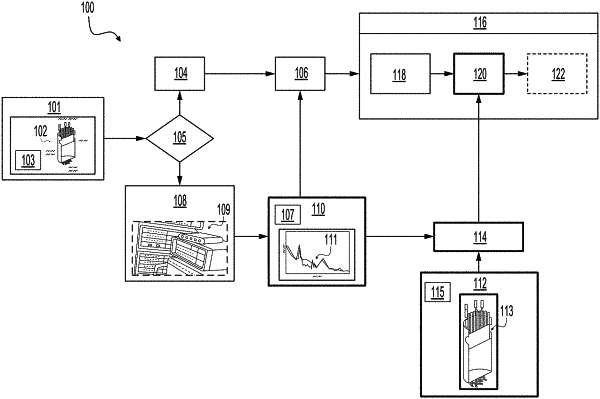| CPC G21D 3/001 (2013.01) [G21C 17/00 (2013.01); G21C 9/02 (2013.01); G21C 17/08 (2013.01); G21C 17/10 (2013.01); G21D 3/06 (2013.01)] | 4 Claims |

|
1. A system configured to monitor structural health of reactor vessel internals within a nuclear reactor, the system comprising:
a memory that stores historical information associated with a past performance of the nuclear reactor;
an anomaly detection subsystem comprising a first control circuit configured to receive a signal from a sensor, wherein the signal is associated with a level of neutron noise emitted by the nuclear reactor, and wherein the anomaly detection subsystem is configured to:
determine, via the first control circuit, a characteristic of a vibrational response of the reactor vessel internals based on the received signal;
access, via the first control circuit, the historical information stored in the memory;
compare, via the first control circuit, the determined characteristic to the historical information stored in the memory; and
determine, via the first control circuit, a condition of the reactor vessel internals based on the comparison of the determined characteristic and the historical information; and
a mechanical diagnostic subsystem communicably coupled to the memory and the anomaly detection subsystem, wherein the mechanical diagnostic subsystem comprises a second control circuit, and wherein the mechanical diagnostic subsystem is configured to:
receive, via the second control circuit, the determined condition of the reactor vessel internals from the anomaly detection subsystem;
generate, via the second control circuit, a computer-generated, three-dimensional model of at least a portion of the nuclear reactor; and
generate, via the second control circuit, a diagnostic conclusion associated with the nuclear reactor based on the determined condition of the reactor vessel internals and the computer-generated, three-dimensional model.
|